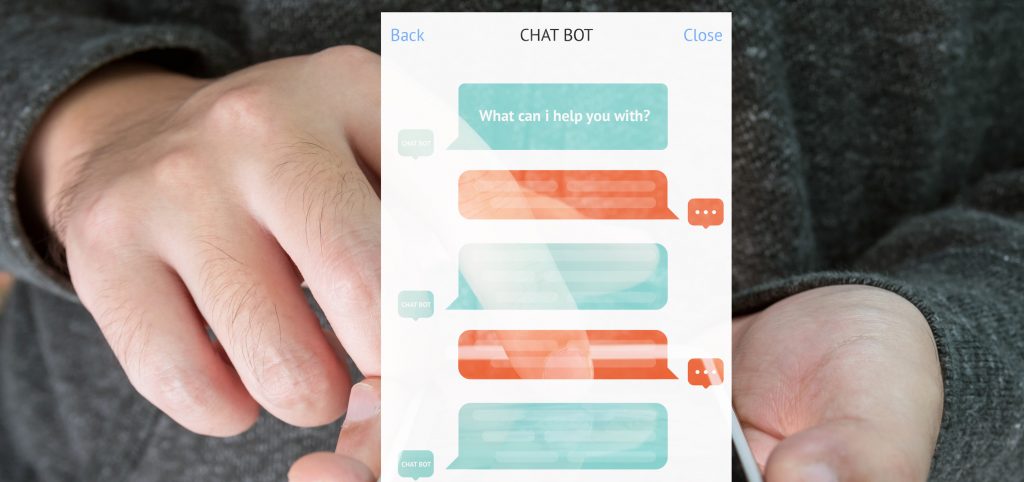With the speed of technological innovation, agencies are looking for new ways to increase citizen engagement and satisfaction. Investing in artificial intelligence (AI) and chatbots may be a way to transform the way government organizations interact with citizens.
In a recent Govloop online training, Stephen Dennis, Innovation Director of Homeland Security Advanced Research Projects Agency (HSARPA), Homeland Security Department and Tommy Minta, Solutions Lead for Genesys discussed how AI and chatbots have the potential to improve daily operations for citizens, agencies and agency employees.
Agency Concerns About Chatbots and AI
“Chatbots and AI are about reaching a point where people can dialogue with data,” Minta said. “We want to identify the most common self-service tasks that citizens need that can easily be automated.”
While most organizations are familiar with chatbots, many are averse to integrating them into agency operations due to a lack of understanding of the technology’s potential. “Some of these technologies are difficult to understand and they’re not really explanatory,” Dennis said. “It’s difficult to trace the results of the systems back to a particular rationale”
Minta noticed that with this misunderstanding comes steps to implementing the technologies that should be reversed. “Organizations are looking for a solution in search of a problem instead of identifying a problem that needs to be solved.”
“We have to insert technology where appropriate,” Dennis added. “Often, we will begin our engagement with organizations with an attempt to understand their current process, why efficiency is needed and where efficiency can be improved.”
However, a lack of knowledge of the technology is not always the issue. For many, the integration of AI represents a major change in culture and operations that may not match with citizens’ current idea of government. For instance, a lot of citizens and agencies alike are concerned with the idea of chatbots replacing human interaction.
“Automation should not necessarily be used on its own,” Dennis said. “It’s not about replacing humans, but about how we can be more efficient within our scope of human capability.”
Genesys uses a method called blended AI, which is taking automation and blending it with the power of the human touch. “If automation can serve you completely that’s great, but if not, the important thing is to effectively route and get it to the right person to pick up where the automation left off,” Minta said.
As for leadership that may be averse to change, “Enabling an organization to grow and change its culture is part of the automation process,” Dennis said. “The good news is that the focus is always on improving the mission, so the leadership is open to how that can be achieved.”
Benefits of Chatbots and AI
Chatbots can improve the citizen experience by allowing for a more efficient question and answer process, increasing accessibility and improving the user interface. And when it comes to self-services, it can be an efficient way for citizens to interact with government.
“The evolution of chatbot is a visual format with more intelligence,” Minta said. “When it comes to self-service, people want to get the answers that they want quickly. By giving people the possibility of having a dialogue with the agency’s underlying data, chatbots make answers to the most common questions immediately accessible. And with citizen satisfaction comes other benefits for organizations.”
Organizations are recognizing that if citizens are satisfied with automation, the rest of the factors of citizen engagement will fall into place. Chatbots not only provide the opportunity to improve citizen engagement and interaction, but they can also increase employee satisfaction. “If you can offload the mundane tasks, your employees can feel that they have time to solve more significant problems,” Minta said. “On the other side, you can use this technology internally to assist employees to get the data that they need.”
For example, Genesys created over 80 intelligence operation tools called microapps to assist chatbots with citizens’ most commonly requested tasks such as a change of address, paying bills or finding important locations. “These microapps are available through visual channels such as web, Facebook message and text or through the voice channel as well. You design it once, set it up through your agency and then it’s available on the website.”
Best practices for Integrating New Technologies
Before incorporating new AI technology into agency operations, Dennis recommends testing the chatbot system with agency data. “When the technology is exposed internally it’s easier to expose externally as well,” Dennis said. “If you don’t have the ability to perform testing in a lab, there are cloud resources available where you can test the technologies using data that represents your own.”
After successful integration, one of the biggest issues agencies have with chatbots is measuring their effectiveness. Dennis said that analyzing how citizens are interacting with automation can reveal a way to measure success. “You have to speak to the role of a system’s performance to the organization’s mission. Then you have to translate technical parameters surrounding the solution. For instance, it could be question and answering, accessibility or issues with interface.”
Overall, agencies have to remember the reason they adopted AI in the first place: to increase citizen satisfaction. When employing the new technologies, Minta suggests a method called “journey mapping” which involves taking a step back to imagine the citizen experience. “Sometimes, agencies create more roadblocks than necessary for citizens. It’s important to recognize the difficulties that citizens are encountering so you can think about how to make it more efficient.”
